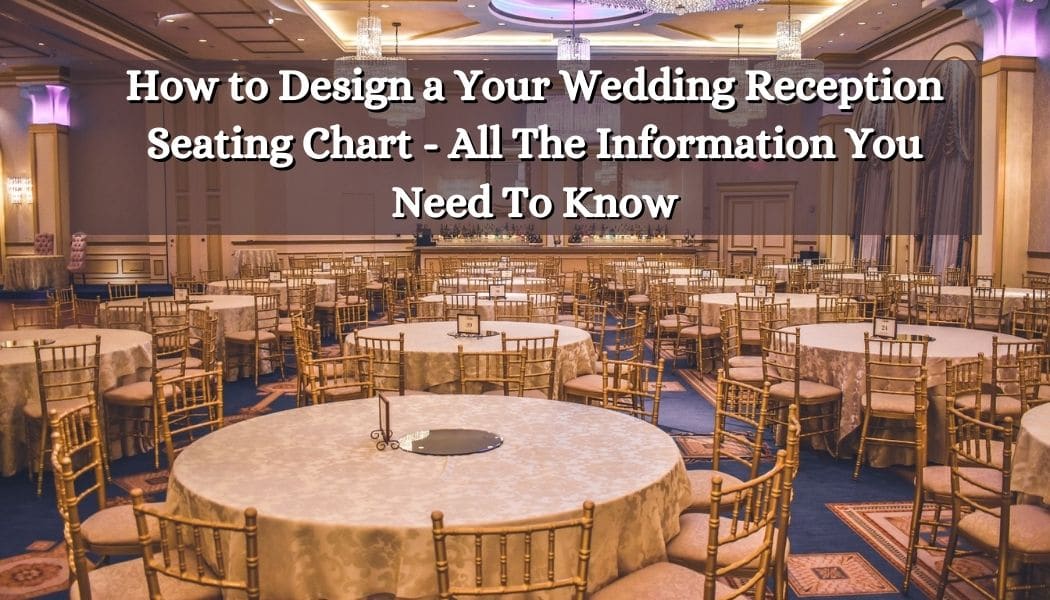
Planning a wedding is no easy feat, but creating a seating chart can be even more difficult. So instead of letting this daunting task stress you out, take it one step at a time.
If you wonder, do I have to make one? Trust us when we say you will have one less thing to worry about on your wedding day if you have a planned seating chart.
It allows you to better plan your wedding reception details, and it ensures that all guests are being accommodated and seated correctly. Besides, some event planners or caterers require pre-planned seating to better accommodate guests on your wedding day.
Having an assigned seating chart helps your wedding planner and food servers ensure that all tables are filled and guests are served, especially for plated dining.
While assigning seats can be stressful, trust us that planning is always better. A pre-planned wedding reception seating chart will save your guests and the event staff all the confusion on your wedding day. Here are some tips on how to create your wedding chart.
Table of Contents
Relax, don’t overthink it.
You might get too caught up in the seating plan and start overthinking how your guests might react. Relax. After all, it is your wedding day, and you know your guests well enough to know how comfortable (or uncomfortable) they will get being seated next to colleagues or acquaintances.
As long as they are seated well, comfortable, and have a good time, you need not worry about the seat planning too much.
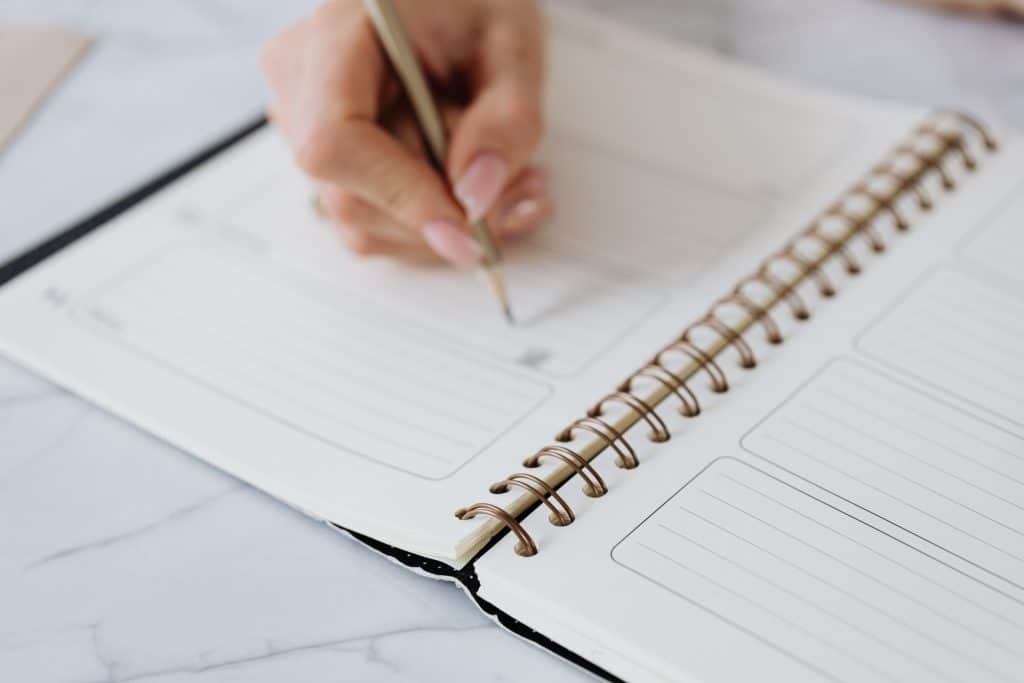
Make a guest list first.
Before figuring out where the guests will be seated, finalize your guest list first. Agree on the number of people joining you in the wedding reception and whether they are allowed to bring additional guests. Ensure to include a reminder to R.S.V.P to you or your wedding planner beforehand.
Consider your venue.
Your table set-up and seating arrangements ultimately depend on your venue. For example, if you have an outdoor wedding reception, you may be able to accommodate more guests, and tables can be more widespread compared to indoor venues.
Determine whether you want to have one big table or several smaller ones. This will depend on how formal or informal your wedding will be and how many guests are coming.
Also, decide on your table shape, depending on your venue. For example, long rectangular tables can seat more guests, but they may not work for your chosen venue. Finally, decide on how many guests will be sitting at a table.
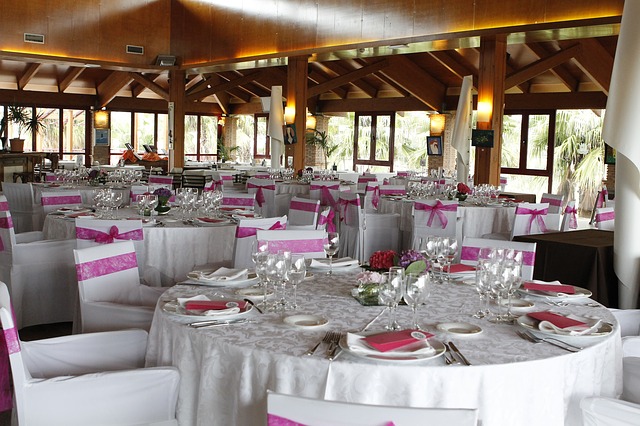
Create your floor plan.
Have a sketch of your table set-up and seating arrangements, considering the size of the venue. There are plenty of wedding seating plan templates online, or you may request your wedding organizer to do so if they offer such services.
The best way to decide this is by looking at pictures online from other weddings with similar guest counts/size venues! You can get a lot more creative with round tables because everyone is sitting around them so close together in a circular shape; however, having too many may cause congestion near food stations or other essential areas like bathrooms where people might need access quickly.
Have a principal or head table
Aside from a particular table arrangement for the couple, consider having a top table for the couples’ parents and your bridal entourage to recognize them and all their help in your wedding preparations.
You may also decide on seating them at a table with a different share so that the crowd recognizes them. For example, have them sit on a rectangular table while all the other guests occupy the round tables. You can find matching tablecloth linens for both rectangular and round tables. You may also opt to add an eye-catching table overlay or table decorations for your head table.
Have these tables closest to the bride and groom’s table, or seat them at a long rectangular table on each side of the bride and groom, facing the other guests.
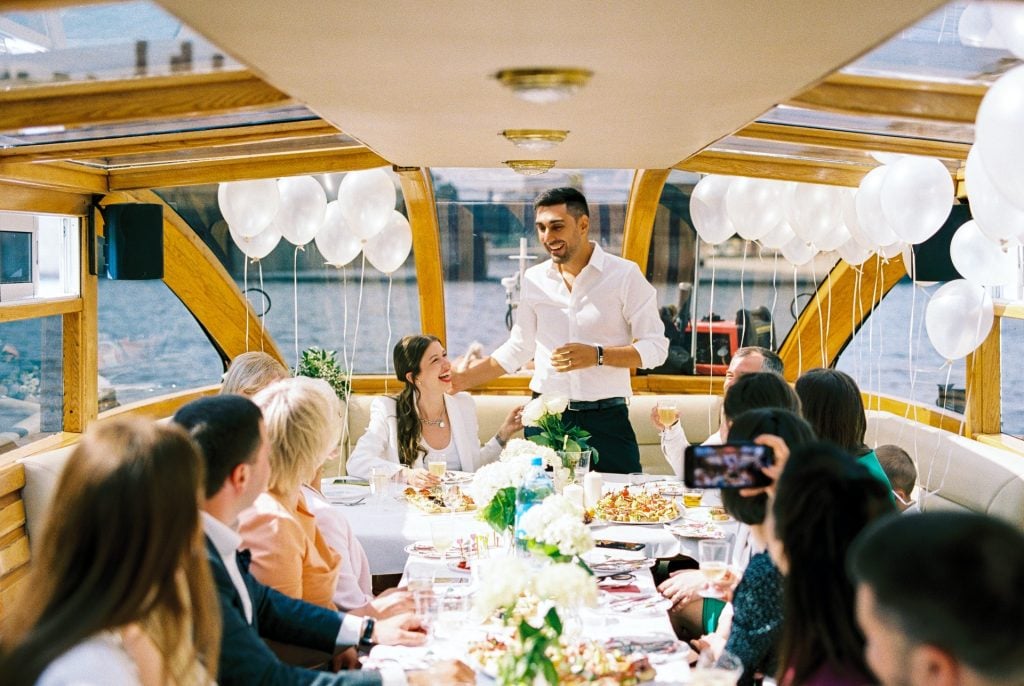
Seat guests according to groups
The easiest way to plan table seating is to organize guests according to the groups they belong to. For example, seat them next to members of the same friend group, office colleagues, or relatives and family friends.
This way, they can have a wonderful time with people they know or are already friends with.
Set a separate table for kids
If you allow kids to join the wedding reception, consider assigning a kids table where they are served food that they will enjoy. In addition, they are provided with games or activities, so they do not start running around the venue or throw tantrums.
Notify their parents beforehand of this arrangement, or encourage guests to have someone care for their kids while they attend the wedding party.
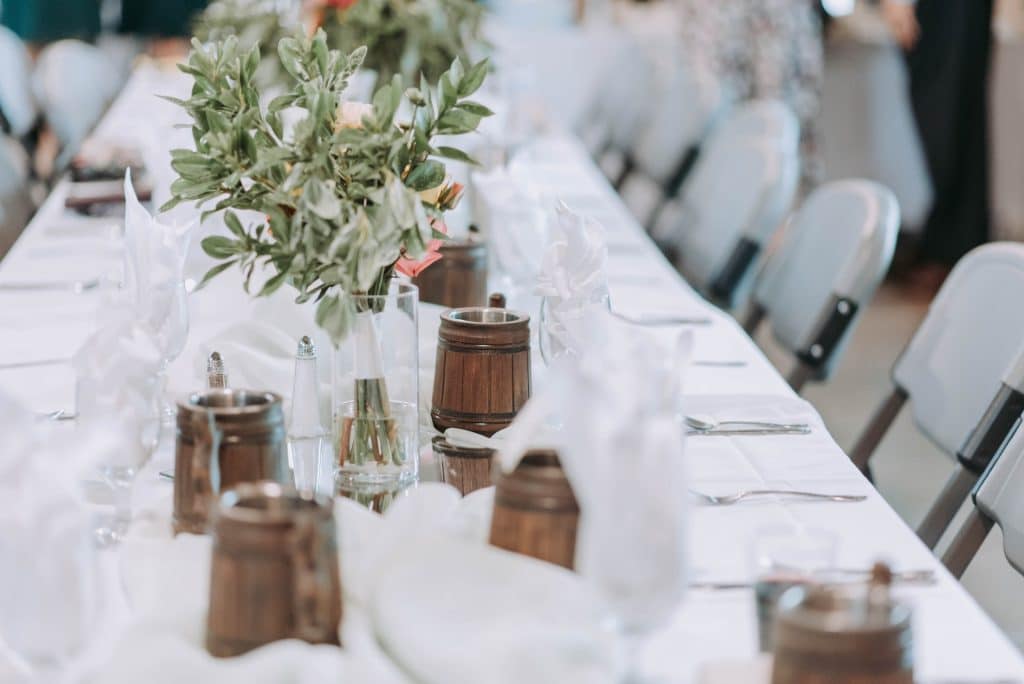
Let them know where they are seated beforehand.
To avoid confusion, notify guests of their seating arrangements beforehand. For example, you may send them a digital copy of the seating chart so they know who they are seated with or notify them of their seat number.
This way, they do not find themselves scrambling for their seats while the reception is starting. Also, consider having an accessible seating chart during the reception. Please print out a copy of the seating chart and place it at the venue entrance, so guests can check where they are seated.
Have their names printed out on cards and place them on top of charger plates so they can easily see their assigned chairs. You can also get creative with their terms and table numbers using a variety of decorations depending on your theme.
Ditch the single table
Nobody needs this. You do not need to “single” out your single friends, especially not on your wedding day. You may also be embarrassing your single friends by seating them at a designated singles table.
Have everyone seated according to the friend or family groups they belong to, and let them have a good time. I
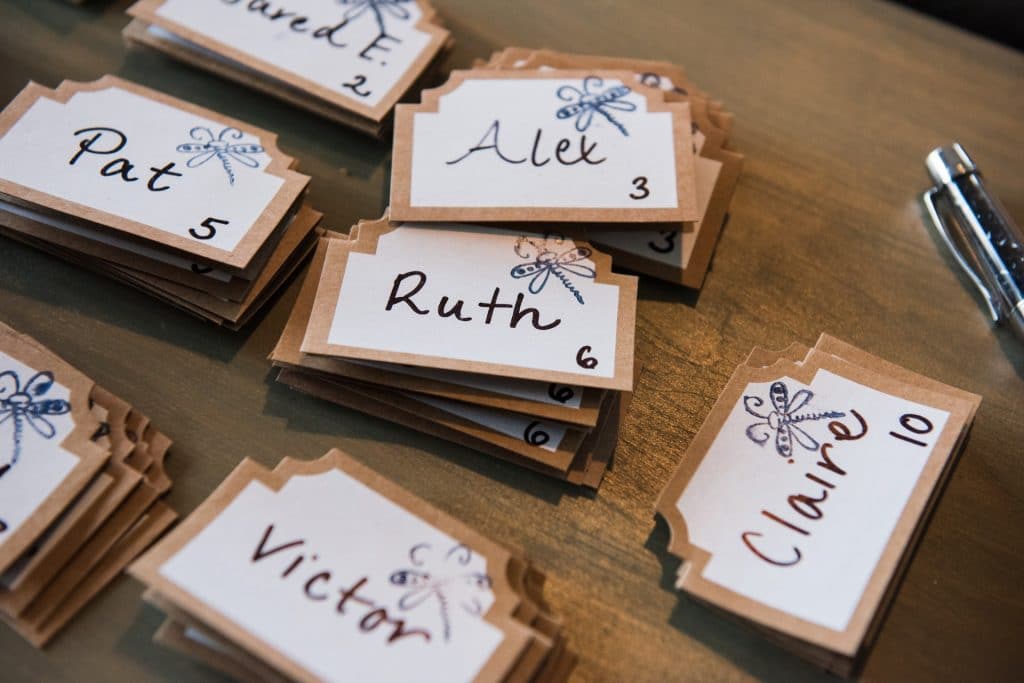
Assign tables instead
You may also consider assigning your guests to designated tables and letting them choose where they want to sit and who they want to sit next to. This gives them more freedom to choose but is also organized enough, and you can still make sure that all tables are filled.
A seating chart helps you plan out all the details for your big day, including who sits where and how large your tables should be.
Get Creative with Your Placement
When it comes to the seating chart, you should keep a few things in mind. The first is to make sure that you’re comfortable with the room’s flow. Ideally, you’ll want your guests to be able to move through the space quickly and conveniently. You don’t want anyone having to get up extra early or wait for others for long periods.
The second consideration is whether or not there will be space for dancing at your wedding reception—and if so, how much? This can be tricky if some tables are located near walls or corners and thus have less room available than others. You might also need extra space for photographers who want to take photos during dinner or cake-cutting ceremonies (which should occur before dinner). And finally, keep in mind that DJs typically set up around 50 feet from where their equipment will be used—so you’ll want enough room for them!
A seating chart helps you plan out all the details for your big day, including who sits where and how large your tables should be.
A seating chart is an essential wedding planning tool. It helps you plan out all the details for your big day, including who sits where and how large your tables should be. Here’s what to know about creating one:
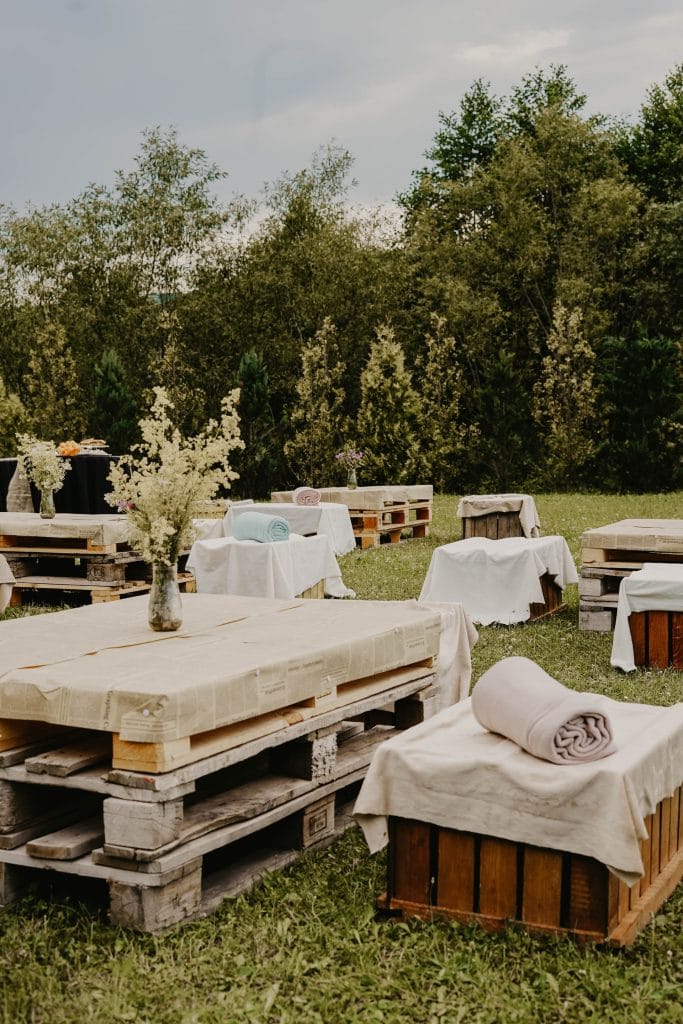
Benefits of a seating chart
- You can use it to determine whether you have enough chairs for your guests.
- It shows which guests will be seated next to each other at the reception so that they can make plans together beforehand or during cocktail hour.
- If there are any special needs or dietary restrictions among your guests, making sure they are seated near each other will help ensure that they feel comfortable enjoying their meal together and communicate with each other easily during dinner conversations (which may involve hearing devices).
I hope this article helped you understand the basics of making a seating chart for your wedding. It can be an overwhelming process, but it’s worth taking the time to do it right. And remember—don’t forget that you don’t have to do all this work on your own! You can hire a professional to help create a beautiful and functional seating chart for your guests, saving you lots of time and energy.
Summary: How to Design Your Wedding Reception Seating Chart
- Start by creating a guest list with accurate RSVPs to determine the number of tables and chairs needed.
- Use a digital tool or wedding planning software to make the seating chart process easier and more efficient.
- Consider the layout of your reception venue and create a floor plan to visualize the seating arrangement.
- Group guests together based on their relationships, such as family members, close friends, and colleagues.
- Take into account any special needs or preferences of your guests, such as dietary restrictions or mobility issues.
- Balance the personalities and dynamics of guests to ensure a harmonious atmosphere at each table.
- Opt for a mix of familiar faces and new acquaintances to encourage conversation and interaction among guests.
- Keep in mind the overall flow and accessibility of the reception space, including the placement of the dance floor and other key elements.
FAQ – Seating Charts
On a seating chart, how do you arrange the names?
Should visitors’ names be included alphabetically by first or last name on a seating chart? It’s ideal to organize guests’ names alphabetically by last name, followed by their allotted table number, for clarity and simplicity.
How to create a seating chart?
Determine the number of people coming to celebrate with you on this special day by calculating how many seats will fit around each table and any extra chairs needed if there are more people than can comfortably sit at one table (this will usually add up fast!)
For a party of 100 people, how many tables do you need?
If you’re providing a buffet with lines running down both sides, you’ll need two 8′ banquet tables for every 100 people.
At a wedding, do parents sit at the head table?
The Bride and Groom sit at the head table at the wedding reception. After then, it’s entirely up to you to decide who else you want to sit with. Depending on the agreement, you may be joined by some or all of your attendants and parents.







![Celebrity-Inspired Wedding Dresses from the Red Carpet to the Aisle [2024]](https://i0.wp.com/www.bestforbride.com/bridal-shop/wp-content/uploads/2023/12/Experience-the-Magic-Celebrity-Inspired-Wedding-Dresses-from-the-Red-Carpet-to-the-Aisle.jpg?ssl=1)
![Stay Prepared for Unexpected Last-Minute Wedding Dress Emergencies: 8 Key Scenarios [2024]](https://i0.wp.com/www.bestforbride.com/bridal-shop/wp-content/uploads/2023/12/Stay-Prepared-for-Unexpected-Last-Minute-Wedding-Dress-Emergencies-8-Key-Scenarios.jpg?ssl=1)




